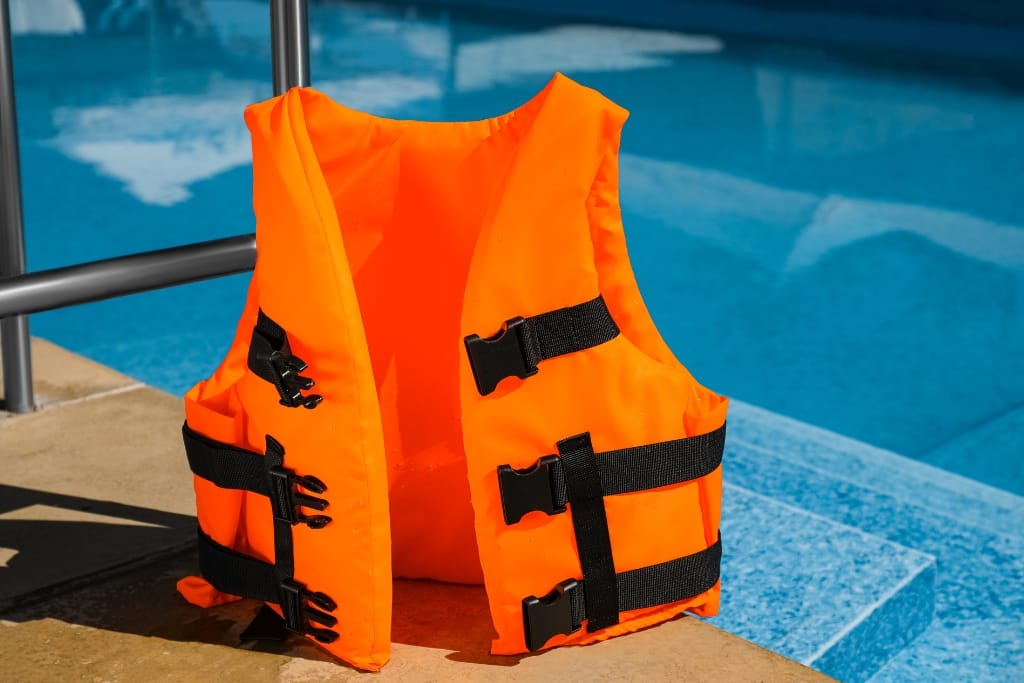Swimming is one of the most enjoyable and beneficial activities for people of all ages, offering a perfect way to stay active, cool off, and have fun.
However, it's essential to prioritize safety to avoid accidents and injuries that could turn an enjoyable experience into a dangerous situation.
By understanding and following key safety practices, you can ensure that every swim is both safe and rewarding.
Keep reading to discover the top safety tips for making your time in the water secure and stress-free.
1)) Always Swim With A Buddy
Swimming with a buddy is one of the simplest yet most effective ways to stay safe in and around water.
Having someone with you ensures that there's always another person to assist in case of an emergency or unexpected situation.
Whether you're swimming in a pool, lake, or ocean, a buddy can provide added vigilance, helping to watch for dangers such as strong currents or signs of distress.
Sharing the experience with a companion makes the activity more enjoyable and creates a sense of mutual accountability.
Prioritizing teamwork in the water enhances safety and builds confidence.
2)) Keep An Eye On Children
Keeping a close eye on children while they are in or near water is crucial for their safety.
Young swimmers may lack the skills or awareness to identify and avoid potential dangers, making constant supervision essential.
Ensure an adult is always within arm's reach of younger kids, and discourage distractions such as phones or prolonged conversations when supervising.
Establishing clear rules about safe behavior in and around water can also help maintain order and reduce risks.
Supervising attentively ensures children can enjoy swimming safely while building confidence in the water.
3)) Learn CPR And First Aid
Knowing CPR and basic first aid can make all the difference in an emergency, especially when it comes to water-related incidents.
Accidents can happen quickly, and having the skills to respond effectively can save lives or reduce the severity of injuries.
Taking the time to learn proper techniques ensures you're prepared to assist until professional help arrives.
Gaining confidence in these critical skills empowers you to act promptly and responsibly in any water emergency.
Pro-Tip: Always keep a well-stocked and easily accessible first aid kit nearby when engaging in water activities.
Having essential supplies on hand, such as bandages, antiseptics, and cold packs, allows you to address minor injuries quickly and effectively.
Being prepared ensures you can manage unexpected incidents promptly, providing peace of mind and an added layer of safety for everyone involved.
4)) Obey Pool Rules And Signs
Following pool rules and paying attention to posted signs are essential for ensuring safety and preventing accidents.
These guidelines are designed to address hazards specific to each pool, such as depth changes, prohibited activities, or restricted areas.
Ignoring these rules can put swimmers at risk and disrupt the experience for others.
Simple actions like walking instead of running near the pool, avoiding rough play, and respecting "no diving" signs can significantly minimize injuries.
Adhering to safety instructions protects everyone and helps create a secure and enjoyable environment for all.
5)) Avoid Swimming Under The Influence
Swimming under the influence of alcohol or drugs is extremely dangerous and significantly increases the risk of accidents and drowning.
Substances like alcohol impair judgment, coordination, and reaction time, all of which are critical for staying safe in the water.
Alcohol can lead to overconfidence, causing individuals to underestimate potential hazards such as strong currents or fatigue.
Remaining clear-headed ensures that you're fully aware of your surroundings and able to make sound decisions while swimming.
Staying substance-free allows you to enjoy the water responsibly and reduces risks for yourself and others.
6)) Check Water Depth Before Jumping
Jumping into the water without checking the depth can lead to serious injuries or even fatal accidents.
Shallow areas pose significant risks such as hitting the floor or hidden objects, which can result in broken bones, head injuries, or spinal damage.
Always inspect the water depth visually or inquire about it with pool staff or locals if swimming in natural bodies of water.
For added safety, look out for any signs indicating depth or warnings of underwater hazards.
Taking these precautions ensures a safer and more enjoyable experience, protecting both yourself and others from preventable harm.
7)) Use A Proper Flotation Device
Using proper flotation devices is essential for ensuring safety, particularly for inexperienced swimmers or those navigating open water.
Items like life jackets and buoyancy aids are specifically designed to provide support and keep individuals afloat, reducing the risk of drowning.
It's important to select flotation devices that are appropriate for the wearer's size and adhere to safety standards, as ill-fitting or poorly made equipment can fail in critical moments.
Flotation devices should always be worn securely and inspected regularly for damage.
Prioritizing the use of reliable flotation aids enhances water safety for everyone and inspires confidence while swimming.
8)) Avoid Swimming During Bad Weather
Swimming during bad weather can be extremely dangerous and should always be avoided.
Stormy conditions, particularly those involving lightning, pose serious life-threatening risks, as water is an excellent conductor of electricity.
Strong winds and heavy rain can create turbulent waters, reduce visibility, and make it harder to detect hazards in natural bodies of water.
Even in pools, severe weather can disrupt safety measures and lead to accidents.
Checking weather forecasts before planning any aquatic activity and keeping an eye out for sudden weather changes ensures everyone stays safe and avoids unnecessary risks.
Waiting for clear and calm weather provides the best environment for enjoying water activities responsibly.
9)) Stay Hydrated And Avoid Exhaustion
Maintaining hydration and managing physical exertion are vital for ensuring safety and comfort during swimming activities.
Dehydration can sneak up on swimmers, especially in hot or humid conditions, leading to symptoms like fatigue, dizziness, and muscle cramps that can compromise safety in the water.
Regularly drinking water before, during, and after swimming helps to sustain energy levels and prevent dehydration.
Similarly, knowing your physical limits is essential to avoid overexertion, as exhaustion can make it difficult to stay afloat or respond effectively in an emergency.
Taking these precautions promotes a safer and more enjoyable swimming experience for everyone involved.
10)) Keep Clear Of Pool Drains
Staying away from pool drains is critical to ensuring safety while swimming.
Drains can create powerful suction forces that may trap swimwear, hair, or even parts of the body, leading to severe injuries or drowning.
This risk is especially dangerous for children, who may not recognize the hazard or have the strength to free themselves.
It is essential to make sure that pool drains are covered with proper, functioning safety grates and to educate swimmers about the dangers they pose.
Keeping a safe distance from pool drains significantly minimizes the risk of accidents and helps maintain a secure swimming environment for everyone.
11)) Supervise Inexperienced Swimmers
Providing active supervision for inexperienced swimmers is one of the most effective ways to ensure their safety.
Those new to swimming, particularly children, can quickly find themselves in dangerous situations, such as venturing into deeper water or struggling to stay afloat.
Maintaining proximity enables supervisors to step in immediately if assistance is needed, reducing the risk of accidents.
Besides keeping a watchful eye, offering encouragement and guidance helps build confidence and skills for new swimmers.
Remaining attentive and vigilant creates a safer and more supportive environment, fostering enjoyment and security for everyone involved.
Conclusion
Water safety requires a combination of precautions, awareness, and responsible actions to prevent accidents and ensure enjoyable swimming experiences for everyone.
From using proper flotation devices to understanding the dangers of bad weather, each step plays a crucial role in minimizing risks.
By staying informed, remaining vigilant, and prioritizing safety measures, individuals can confidently engage in aquatic activities while protecting themselves and others.
Practicing these habits fosters a safer environment, allowing the joys of swimming to be fully embraced without unnecessary hazards.
Download Our Free E-book!







